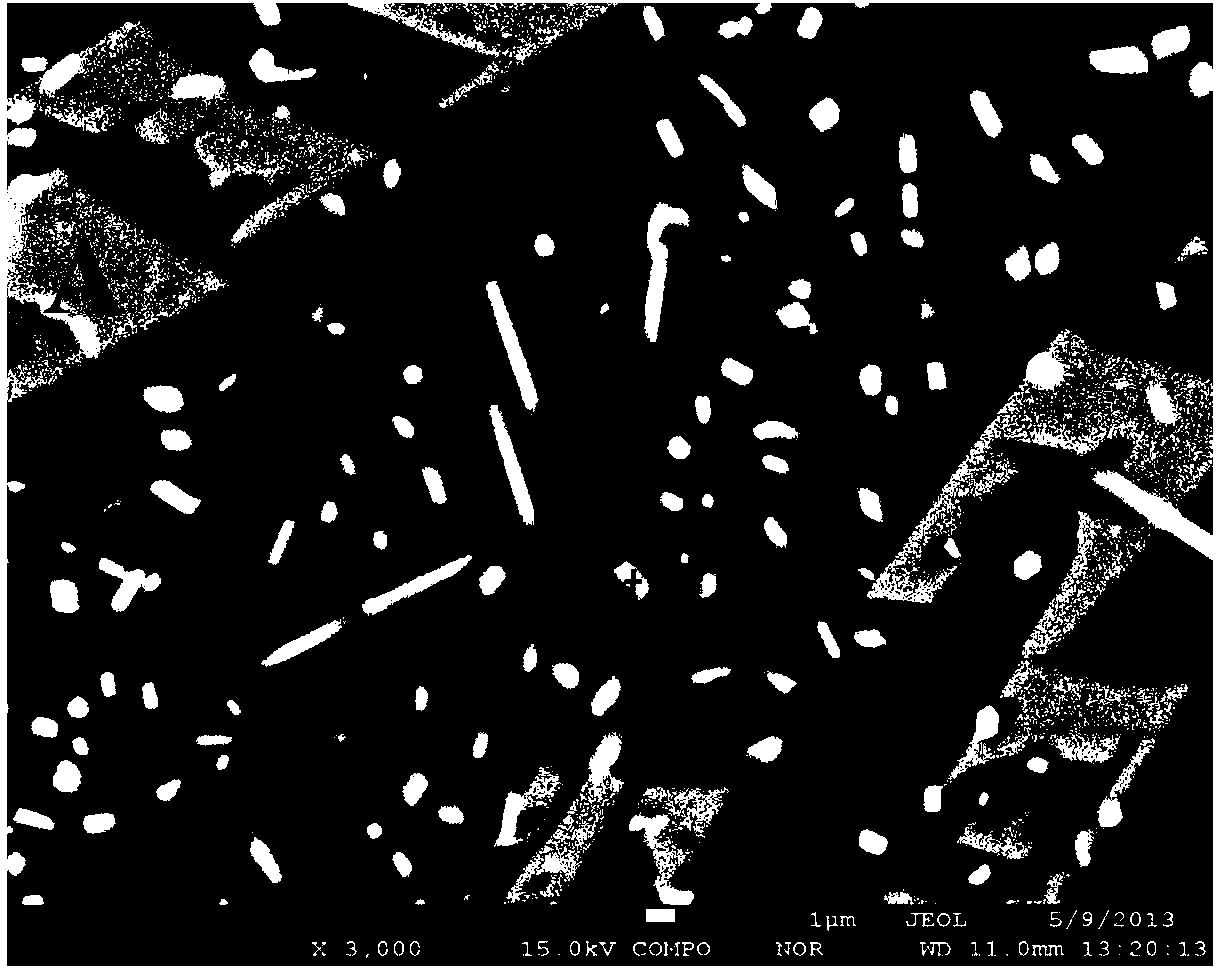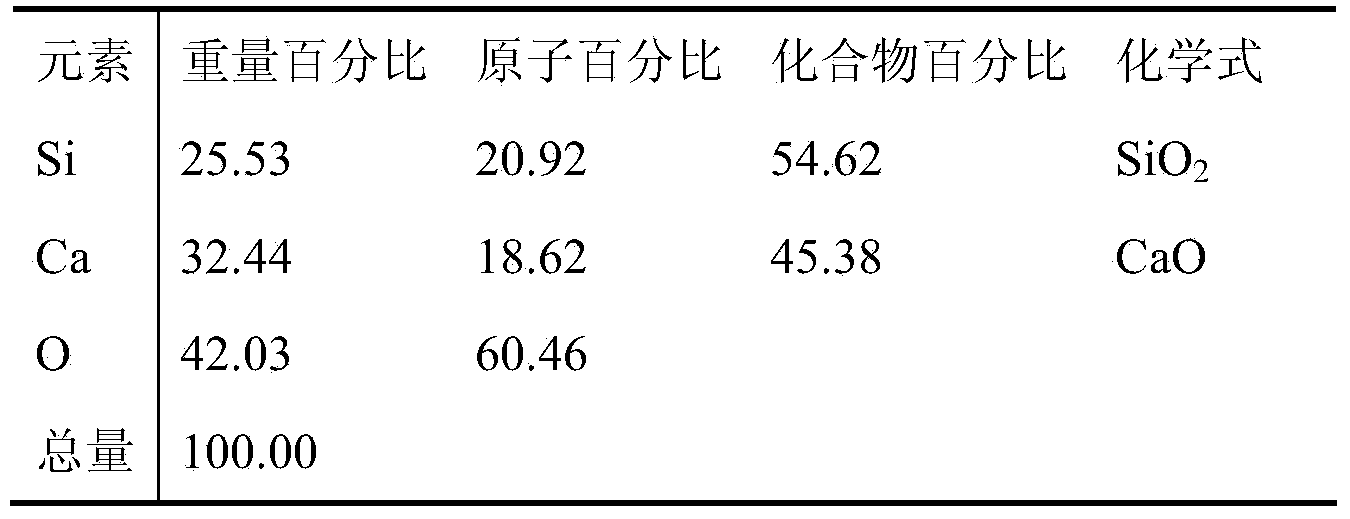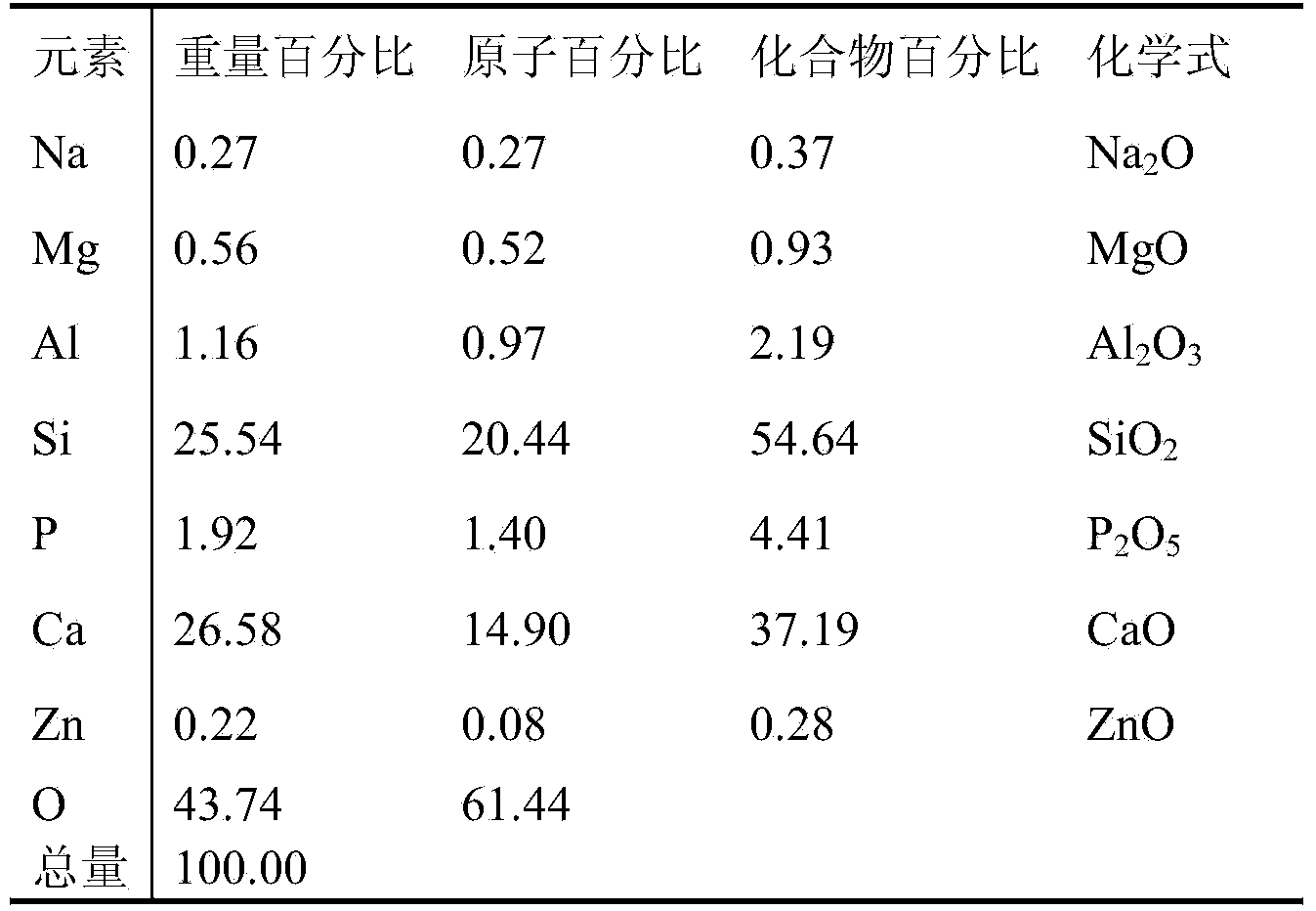Beige tooth microcrystalline glass compounded by frits of wollastonite and apatite
A technology of glass-ceramic and glass-ceramic frit, which is applied in the field of biological glass ceramics, can solve problems such as harsh process requirements, unfavorable industrialization and application, and high risk, and achieves low preparation process requirements, is convenient for industrialization, and guarantees The effect of compatibility
- Summary
- Abstract
- Description
- Claims
- Application Information
AI Technical Summary
Problems solved by technology
Method used
Image
Examples
Embodiment 1
[0031] Wollastonite glass-ceramic frit is made by melting the following raw materials in parts by weight: SiO 2 67.5 parts, CaO20 parts, Na 2 O12.5 copies;
[0032]The apatite glass-ceramic frit is smelted from the following raw materials in parts by weight: SiO 2 46 copies, Al 2 o 3 3.3 parts, CaO13 parts, BaO2 parts, MgO3.6 parts, B 2 o 3 2 parts, Na 2 O+K 2 O13 parts, CaF 2 0.6 parts, P 2 o 5 4.5 parts, ZnO3 parts, Sb 2 o 3 1 part, CeO 2 1 part, TiO 2 0.5 servings.
[0033] The specific preparation method is as follows:
[0034] (1) Preparation of wollastonite glass-ceramic frit: ①Weigh the wollastonite frit raw material according to the above parts by weight, mix and pour it into a mixer, and stir for 1 hour; Hours, water quenching, drying, crushing and forming frit powder;
[0035] (2) Preparation of apatite glass-ceramic frit: ①Weigh the apatite frit raw material according to the above parts by weight, mix and pour it into a mixer, and stir for 1 hour; ②...
Embodiment 2
[0049] Embodiment 2 Compared with Embodiment 1: the raw material proportions of wollastonite glass-ceramic frit and apatite glass-ceramic frit remain unchanged, the difference is that wollastonite frit and apatite frit are according to The ratio of 3:1 is mixed, and the sintering temperature and sintering time after mixing are the same as those in Example 1.
[0050] Electronic probe test analysis shows that the prepared glass-ceramics contains two crystal phases of wollastonite and apatite. The bending strength tested on the WDW3100 electronic universal testing machine is 99.3MPa, and the bending strength tested on the FM-700 microhardness tester is 99.3 MPa. The Vickers hardness is 6.46GPa (HV 0.5 ), which can be used in medicine as a dental restoration material.
[0051] It can also be seen from the results of Example 2 that the performance of glass-ceramic products is improved due to the increase in the proportion of wollastonite frit; this shows that the preparation meth...
Embodiment 3
[0053] Embodiment 3 Compared with Embodiment 1: Change the ratio of each raw material of wollastonite glass-ceramics frit and apatite glass-ceramics frit and the mixing ratio of the two frits at the same time, specifically:
[0054] Wollastonite glass-ceramic frit is made by melting the following raw materials in parts by weight: SiO 2 62.5 parts, CaO25 parts, Na 2 O12.5 copies;
[0055] The apatite glass-ceramic frit is smelted from the following raw materials in parts by weight: SiO 2 46 copies, Al 2 o 3 3.3 parts, CaO13 parts, BaO2 parts, MgO3.6 parts, B 2 o 3 2 parts, Na 2 O+K 2 O13 parts, CaF 2 0.6 parts, P 2 o 5 4.5 parts, ZnO3 parts, Sb 2 o 3 1 part, CeO 2 2 parts, TiO 2 1 serving.
[0056] The preparation method of Example 3 is basically the same as that of Example 1. The difference is that the melting temperature of the wollastonite frit is 1560° C. and the time is 2 hours. The melting temperature and time of the apatite frit are the same as in Example ...
PUM
| Property | Measurement | Unit |
|---|---|---|
| bending strength | aaaaa | aaaaa |
| particle size | aaaaa | aaaaa |
| Vickers hardness | aaaaa | aaaaa |
Abstract
Description
Claims
Application Information
 Login to View More
Login to View More - R&D
- Intellectual Property
- Life Sciences
- Materials
- Tech Scout
- Unparalleled Data Quality
- Higher Quality Content
- 60% Fewer Hallucinations
Browse by: Latest US Patents, China's latest patents, Technical Efficacy Thesaurus, Application Domain, Technology Topic, Popular Technical Reports.
© 2025 PatSnap. All rights reserved.Legal|Privacy policy|Modern Slavery Act Transparency Statement|Sitemap|About US| Contact US: help@patsnap.com



